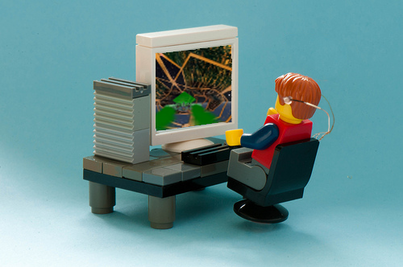What type of neurofeedback do we offer?
|
Spectrum Psychological uses Othmer Protocols and Infra-Low Frequency (ILF) Neurofeedback using Cygnet and Brainmaster Neuroamps. Here is some more detailed information regarding the experience and training of our Neurotherapist, Nikki Schwartz, for referring clinicians, and a short explanation of each of these terms for interested clients.
|
Nikki Schwartz's Training and Experience in Neurofeedback
I was initially trained in neurofeedback during my graduate internship in 2010 with Dr. Lanny Fly, LMFT, at Fly Family Therapy. My formal training was completed later that year with EEGInfo in California. I use Othmer Protocols to work with individuals with Autism, Asperger's, ADHD, as well as Anxiety, Depression, Chronic Pain Disorders, and Post Traumatic Stress Disorder. I also continue to be supervised by Dr. Fly as part of her residency and continuing education.
Neurofeedback terms
Othmer Protocols - this refers to the placement of electrodes and method of choosing a reward frequency, developed by Sue and Sigfried Othmer at EEGInfo. Othmer protocols dictate using a bipolar placement, or two electrodes on the head, and a third ground electrode. Typically, we use the lowest reward frequency that the client finds comfortable.
Infra-Low Frequency (ILF) - (also known as Very Low Frequency or VLF) - traditionally, neurotherapists worked with reward frequencies in the Sensorimotor Range (12 to 15 Hz), as well as Alpha (8-12 Hz), Beta (12-30 Hz), Delta (0-4 Hz), and Theta (4-7 Hz). Sue and Sigfried Othmer discovered that strong wavelengths also existed and could be trained at very low frequencies between 0 and 1 Hz. We currently use reward frequencies that are 1/10,000th of a Hz or .1 mHz. It is believed that these frequencies impact glial cells in the brain, which are helper cells to neurons. Why ILF is stronger is not exactly understood, but we do know that it is more calming and more effective for many people.
Cygnet Neuroamps - I mainly uses the Cygnet Neuroamp for neurofeedback, designed by EEGInfo. A "neuroamplifier" is the machine that reads the client's EEG. She also uses a Brainmaster Neuroamp occasionally.
Infra-Low Frequency (ILF) - (also known as Very Low Frequency or VLF) - traditionally, neurotherapists worked with reward frequencies in the Sensorimotor Range (12 to 15 Hz), as well as Alpha (8-12 Hz), Beta (12-30 Hz), Delta (0-4 Hz), and Theta (4-7 Hz). Sue and Sigfried Othmer discovered that strong wavelengths also existed and could be trained at very low frequencies between 0 and 1 Hz. We currently use reward frequencies that are 1/10,000th of a Hz or .1 mHz. It is believed that these frequencies impact glial cells in the brain, which are helper cells to neurons. Why ILF is stronger is not exactly understood, but we do know that it is more calming and more effective for many people.
Cygnet Neuroamps - I mainly uses the Cygnet Neuroamp for neurofeedback, designed by EEGInfo. A "neuroamplifier" is the machine that reads the client's EEG. She also uses a Brainmaster Neuroamp occasionally.
What now?
If you a clinician looking to refer a neurofeedback client, I do offer 30 minute no-charge consults and am happy to hook up clients if they are on vacation or relocating to the Virginia Beach area.
If you are a client looking for a neurofeedback clinician, here is some more information about me. You can also get to know me through my blog posts. Reading through some of those articles is a good way to see if you think I would be a good fit for you, to see how I view different topics and how I interact with clients. I would love to sit down with you and see how I might be able to help.
If you are a client looking for a neurofeedback clinician, here is some more information about me. You can also get to know me through my blog posts. Reading through some of those articles is a good way to see if you think I would be a good fit for you, to see how I view different topics and how I interact with clients. I would love to sit down with you and see how I might be able to help.
